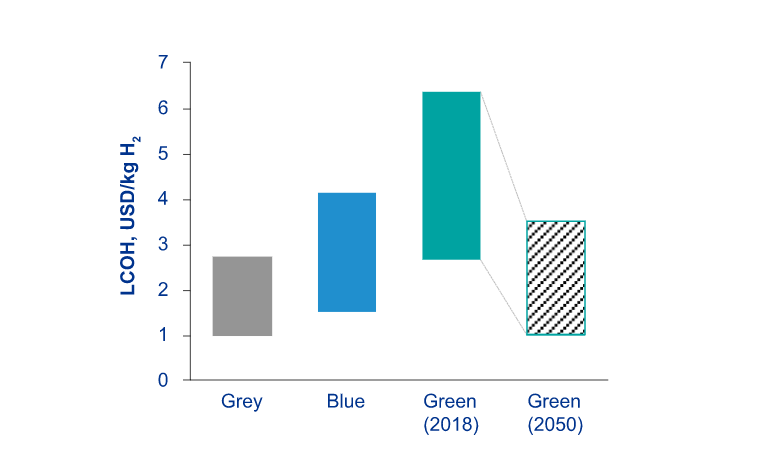Kawasaki Breaks Ground on World’s First Centrifugal Hydrogen Compressor for Liquefaction Plants
Kawasaki Heavy Industries, Ltd. has begun construction of a groundbreaking demonstration facility for the KM
What is meant or defined by Green hydrogen? Green Hydrogen is defined as hydrogen produced by electrolysis (electron splitting) of water into hydrogen and oxygen using renewable electricity.
Green hydrogen is produced through the electrolysis of water. Electrolysis is a technique that uses direct electric current to drive an otherwise non-spontaneous chemical reaction. The Greek word "lysis" means to separate or break, so in terms, electrolysis would mean "breakdown via electricity".
Approximately 9 kg of pure water is needed. Oxygen is 16 times heavier than hydrogen which means 89 % of the mass of water has been taken up by Oxygen. Therefore we can approximately take that 9 kg of water is needed to produce 1 kg of hydrogen. At standard temperature and pressure, 9 kg of water means 9 L. So practically we need to take 9 L of water.
Does it take a lot of electrical energy to produce green hydrogen through electricity? Yes. A theoretical electrolysis system at 100% assumed efficiency would require 39.4 kWh of electricity to produce 1 kg of hydrogen. However, commercial devices which are available for implementation are less efficient. It comes to around 50 - 60% of efficiencies in the long run. Therefore a typical operational figure is about 50 kWh per kg of hydrogen. As an example, one of high efficient AEM electrolysers in the market by Enapter would require 53.3 kWh to produce 1 kg of Hydrogen.
This is a bit difficult question. It depends on the cost of available renewable energy and so much of other economical factors. In the present scenario, green hydrogen costs are being reported in the range of 2.5 - 6 USD/kg of Green Hydrogen. However, scale-up and innovations cost per kilogram of Green Hydrogen will rapidly be reduced and it is predicted that the cost will come down 1 - 3 USD/kg of Green Hydrogen by 2050.

By electrolysis, yes, Sea Water can be used and produced Hydrogen and Oxygen. It is environmentally friendly if we can use Sea Water for this purpose. However, chloride corrosion and precipitate formation on the electrodes is a critical problem. Many attempts have been taken in seawater electrolysis, however, long-term stability has not been demonstrated by such efforts.
Green Hydrogen is hydrogen produced by the electrolysis of water into hydrogen and oxygen using renewable electricity generated from sources like wind, water or solar. Blue hydrogen is hydrogen produced from natural gas with the process of steam methane reforming or coal gasification and carbon generated by either of these processes is captured and stored underground through industrial carbon capture and storage.
More FAQs can be found on this link: